pyramide
« Seth polymorphe : le rival, le vaincu, l’auxiliaire »
ENiM 4, 2011, p. 137-158.
 Le dieu Seth, comme l’illustrent bien les Textes des Pyramides, est une figure polysémique. Cette spécificité tient essentiellement à ce qu’au Seth « ancien », le dieu de Noubet (Ombos, Nagada), protagoniste avec l’Horus de Nékhen (Hiéraconpolis) du mythe fondateur de la constitution de l’État pharaonique, s’est superposé un nouveau Seth héliopolitain, l’agresseur d’Osiris. Les théologiens-théoriciens du pouvoir ont délibérément joué sur cette homonymie afin de stigmatiser toute forme de contestation politique.
Le dieu Seth, comme l’illustrent bien les Textes des Pyramides, est une figure polysémique. Cette spécificité tient essentiellement à ce qu’au Seth « ancien », le dieu de Noubet (Ombos, Nagada), protagoniste avec l’Horus de Nékhen (Hiéraconpolis) du mythe fondateur de la constitution de l’État pharaonique, s’est superposé un nouveau Seth héliopolitain, l’agresseur d’Osiris. Les théologiens-théoriciens du pouvoir ont délibérément joué sur cette homonymie afin de stigmatiser toute forme de contestation politique.
 As it seems to be clear from the Pyramid Texts, the god Seth is a fundamentally polysemic character. This comes from the fact that a “new” Seth, the murderer of Osiris according to the Heliopolitan theology, has been superposed to the older Seth, the god of Nubet (Ombos, Nagada), the protagonist of the historiographic myth together with Horus of Nekhen (Hieraconpolis). This article try to show how this double character of Seth has been intentionally used against whoever would contest the pharaonic power.
As it seems to be clear from the Pyramid Texts, the god Seth is a fundamentally polysemic character. This comes from the fact that a “new” Seth, the murderer of Osiris according to the Heliopolitan theology, has been superposed to the older Seth, the god of Nubet (Ombos, Nagada), the protagonist of the historiographic myth together with Horus of Nekhen (Hieraconpolis). This article try to show how this double character of Seth has been intentionally used against whoever would contest the pharaonic power.
 Consulter cet article (67287) -
Consulter cet article (67287) -  Télécharger cet article au format pdf (30396)
Télécharger cet article au format pdf (30396)
« Horus : polysĂ©mie et mĂ©tamorphoses »
ENiM 6, 2013, p. 1-26.
 À l’instar du théonyme « Seth », le théonyme « Horus » est éminemment polysémique. Fondé sur l’analyse de plus de 900 attestations dans les Textes des Pyramides, cet article tente de classifier les différents référents théologiques, depuis le modèle archaïque, à portée historiographique, d’Horus de Hiéraconpolis jusqu’à l’élaboration de la figure d’Horus l’enfant héritier de son père Osiris. Au-delà du discours religieux, comme toujours, se laissent deviner les évolutions d’une pensée politique et les lourdes implications idéologiques de la diffusion du dogme osirien.
À l’instar du théonyme « Seth », le théonyme « Horus » est éminemment polysémique. Fondé sur l’analyse de plus de 900 attestations dans les Textes des Pyramides, cet article tente de classifier les différents référents théologiques, depuis le modèle archaïque, à portée historiographique, d’Horus de Hiéraconpolis jusqu’à l’élaboration de la figure d’Horus l’enfant héritier de son père Osiris. Au-delà du discours religieux, comme toujours, se laissent deviner les évolutions d’une pensée politique et les lourdes implications idéologiques de la diffusion du dogme osirien.
 Just as « Seth » appears to be, the god name « Horus » is an highly polysemic character. Through the analysis of over 900 occurrences in the Pyramid Texts, this paper attempts to classify the various theological referents, from the archaic model of Horus of Hieraconpolis – built for historiographical purpose – to the development of the character of Horus the child, heir of his father Osiris. Beyond the religious discourse, as usual, one can guess the trends of a political thought and the heavy ideological implications of the spread of the Osirian dogma.
Just as « Seth » appears to be, the god name « Horus » is an highly polysemic character. Through the analysis of over 900 occurrences in the Pyramid Texts, this paper attempts to classify the various theological referents, from the archaic model of Horus of Hieraconpolis – built for historiographical purpose – to the development of the character of Horus the child, heir of his father Osiris. Beyond the religious discourse, as usual, one can guess the trends of a political thought and the heavy ideological implications of the spread of the Osirian dogma.
 Consulter cet article (58588) -
Consulter cet article (58588) -  Télécharger cet article au format pdf (29471)
Télécharger cet article au format pdf (29471)
« The Construction Phases of the Bent Pyramid at Dahshur. A Reassessment »
ENiM 9, 2016, p. 15-36.
 Les particularités architecturales de la pyramide rhomboïdale de Snéfrou à Dahchour-Sud inspirent deux courants d’interprétation. Le premier consiste à y voir l’expression symbolique délibérée d’une dualité et, le second, des modifications en raison de problèmes structuraux survenus au cours du chantier. Cet article fait le point sur l’état de l’archéologie en y apportant des observations inédites et complémentaires. Certains détails jusqu’alors passés inaperçus, ainsi que la pathologie de l’édifice, amènent à confirmer que les bâtisseurs ont apporté plusieurs changements à leur projet, mais aussi à en saisir les raisons. Une révision complète de l’histoire du monument est ainsi proposée en guise de conclusion.
Les particularités architecturales de la pyramide rhomboïdale de Snéfrou à Dahchour-Sud inspirent deux courants d’interprétation. Le premier consiste à y voir l’expression symbolique délibérée d’une dualité et, le second, des modifications en raison de problèmes structuraux survenus au cours du chantier. Cet article fait le point sur l’état de l’archéologie en y apportant des observations inédites et complémentaires. Certains détails jusqu’alors passés inaperçus, ainsi que la pathologie de l’édifice, amènent à confirmer que les bâtisseurs ont apporté plusieurs changements à leur projet, mais aussi à en saisir les raisons. Une révision complète de l’histoire du monument est ainsi proposée en guise de conclusion.
 The architectural peculiarities of the Bent pyramid built by Snefru at South Dahshur are the subject of two currents of interpretation. The first one consists of seeing the symbolic and deliberate expression of a duality in the design, and the second one, modifications due to structural problems that occurred during the construction work. This article reviews the archaeological situation by bringing unpublished and additional observations into the discussion. Some details that have been unnoticed by commentators so far, as well as a structural pathology of the building, lead to confirmation that the builders changed their project several times, but also reveal the reasons for these changes. A complete revision of the history of the monument is then suggested as a conclusion.
The architectural peculiarities of the Bent pyramid built by Snefru at South Dahshur are the subject of two currents of interpretation. The first one consists of seeing the symbolic and deliberate expression of a duality in the design, and the second one, modifications due to structural problems that occurred during the construction work. This article reviews the archaeological situation by bringing unpublished and additional observations into the discussion. Some details that have been unnoticed by commentators so far, as well as a structural pathology of the building, lead to confirmation that the builders changed their project several times, but also reveal the reasons for these changes. A complete revision of the history of the monument is then suggested as a conclusion.
 Consulter cet article (52346) -
Consulter cet article (52346) -  Télécharger cet article au format pdf (25418)
Télécharger cet article au format pdf (25418)
« La rĂ©ception de l’architecture monumentale Ă©gyptienne au prisme de L’AntiquitĂ© expliquĂ©e (1719-1724) de dom Bernard de Montfaucon : Une contribution Ă une histoire du regard Ă©gyptologique »
ENiM 14, 2021, p. 285-313.
 Ce papier aborde une page d’histoire du regard pré-égyptologique sur l’architecture égyptienne à travers L’Antiquité expliquée en figures (1714-1724), ouvrage élaboré par dom Bernard de Montfaucon (1655-1707). Dans sa tentative d’approche de l’histoire culturelle de l’Antiquité, cet antiquaire réunit non seulement un des plus grand ensemble d’objets-images égyptiens de son temps, mais réussit, à partir de la lecture des rares voyageurs contemporains ayant remonté la vallée du Nil – le Rouennais Paul Lucas, le Hollandais Corneille Le Brun (Cornelis De Bruijn), le Parisien Jean Thévenot –, à fournir au lecteur quelques clés sous forme de commentaires permettant de comprendre, selon les critères de son temps, les descriptions de quelques monuments dont les « inventeurs » sont parfois lesdits voyageurs. D’une part la Grande Pyramide, la première description de la « Pyramide rouge » de Snéfrou à Dahchour, le grand Sphinx ; d’autre part le propylône du temple d’Haroëris à Qous (compris comme le « tombeau de Cléopâtre »), le mammisi d’Harprê à Armant (« Temple d’Hermant »), le temple d’Hathor à Dendara (temple ou palais ? « Temple de Sérapis » ?). Analyses curieuses, mais hautement significatives de la culture des XVIIe-XVIIIe siècles dont les paradigmes se rapportent à l’architecture classique et au De Architectura de Vitruve.
Ce papier aborde une page d’histoire du regard pré-égyptologique sur l’architecture égyptienne à travers L’Antiquité expliquée en figures (1714-1724), ouvrage élaboré par dom Bernard de Montfaucon (1655-1707). Dans sa tentative d’approche de l’histoire culturelle de l’Antiquité, cet antiquaire réunit non seulement un des plus grand ensemble d’objets-images égyptiens de son temps, mais réussit, à partir de la lecture des rares voyageurs contemporains ayant remonté la vallée du Nil – le Rouennais Paul Lucas, le Hollandais Corneille Le Brun (Cornelis De Bruijn), le Parisien Jean Thévenot –, à fournir au lecteur quelques clés sous forme de commentaires permettant de comprendre, selon les critères de son temps, les descriptions de quelques monuments dont les « inventeurs » sont parfois lesdits voyageurs. D’une part la Grande Pyramide, la première description de la « Pyramide rouge » de Snéfrou à Dahchour, le grand Sphinx ; d’autre part le propylône du temple d’Haroëris à Qous (compris comme le « tombeau de Cléopâtre »), le mammisi d’Harprê à Armant (« Temple d’Hermant »), le temple d’Hathor à Dendara (temple ou palais ? « Temple de Sérapis » ?). Analyses curieuses, mais hautement significatives de la culture des XVIIe-XVIIIe siècles dont les paradigmes se rapportent à l’architecture classique et au De Architectura de Vitruve.
 This paper deals with a page of history of the pre-egyptological vision on Egyptian architecture through L'Antiquité expliquée en figures (1714-1724), elaborated by dom Bernard de Montfaucon (1655-1707). In his attempt to approach the cultural history of Antiquity, this antiquarian not only brings together one of the largest collections of Egyptian objects of his time, but also succeeds, from the reading of the rare contemporary travelers who sailed up the Nile valley – the Rouen native Paul Lucas, the Dutchman Corneille Le Brun (Cornelis De Bruijn), the Parisian Jean Thévenot –, in providing to the reader some keys in the form of commentaries allowing to understand, according to the criteria of his time, the descriptions of some monuments whose discoverers are sometimes the said travelers. On the one hand the Great Pyramid, the first description of the “Red Pyramid” of Snefru in Dahshur, the great Sphinx; on the other hand the propylon of the temple of Haroeris at Qus (understood as the “tomb of Cleopatra”), the mammisi of Harpre at Armant (“Temple of Hermant”, the temple of Hathor at Dendara (temple or palace? “Temple of Serapis”?). Curious analyses, but highly significant of the culture of the XVII-XVIIIth centuries whose paradigms are related to classical architecture and the De Architectura of Vitruvius.
This paper deals with a page of history of the pre-egyptological vision on Egyptian architecture through L'Antiquité expliquée en figures (1714-1724), elaborated by dom Bernard de Montfaucon (1655-1707). In his attempt to approach the cultural history of Antiquity, this antiquarian not only brings together one of the largest collections of Egyptian objects of his time, but also succeeds, from the reading of the rare contemporary travelers who sailed up the Nile valley – the Rouen native Paul Lucas, the Dutchman Corneille Le Brun (Cornelis De Bruijn), the Parisian Jean Thévenot –, in providing to the reader some keys in the form of commentaries allowing to understand, according to the criteria of his time, the descriptions of some monuments whose discoverers are sometimes the said travelers. On the one hand the Great Pyramid, the first description of the “Red Pyramid” of Snefru in Dahshur, the great Sphinx; on the other hand the propylon of the temple of Haroeris at Qus (understood as the “tomb of Cleopatra”), the mammisi of Harpre at Armant (“Temple of Hermant”, the temple of Hathor at Dendara (temple or palace? “Temple of Serapis”?). Curious analyses, but highly significant of the culture of the XVII-XVIIIth centuries whose paradigms are related to classical architecture and the De Architectura of Vitruvius.
 Consulter cet article (36397) -
Consulter cet article (36397) -  Télécharger cet article au format pdf (17913)
Télécharger cet article au format pdf (17913)
« Building pyramids. Reconstructing the process of lifting stones »
ENiM 15, 2022, p. 245-264.
 Nous vous présentons ici une méthode de déplacement vertical de blocs de pierre que les Égyptiens ont utilisé pour construire des pyramides sans utilisation de rampes ou d’autres méthodes suggérées. Cette méthode n’est pas différente de celle décrite par Hérodote pour la grande pyramide.
À l’aide de bois, de ciseaux, de mèches et de cordes, on fabrique une cage à levier basculant. Cette cage, qui comprend un levier de charpente situé au-dessus du milieu de son plancher de chargement, ressemble à une charpente ouverte en forme de pyramide pointue et peut être inclinée par ce levier. En tirant avec suffisamment de force dans une direction sur le levier, la cage bascule, soulevant ainsi le côté opposé du plancher de la cage. L’espace créé sous ce côté est étayé par des caissons formés de l’empilement en double croix de 2 poteaux parallèles. En tirant ensuite à 180 degrés dans l’autre direction, l’autre côté est soulevé à son tour par inclinaison. L’espace libéré est ensuite également étayé par des caissons. En raison de ces deux mouvements de bascule et d’étayage, la cage à levier basculant est soulevée.
Une cage à levier basculant chargée était utilisée en combinaison avec des niches alignées les unes au-dessus des autres, construites de façon temporaire sur certaines marches de la pyramide. Ces niches ressemblaient à un escalier géant orienté vers le haut de la pyramide en construction, permettant ainsi de décharger une pierre ou la cage entière à n’importe quel niveau de la pyramide, même pour le pyramidion au sommet.
Nous vous présentons ici une méthode de déplacement vertical de blocs de pierre que les Égyptiens ont utilisé pour construire des pyramides sans utilisation de rampes ou d’autres méthodes suggérées. Cette méthode n’est pas différente de celle décrite par Hérodote pour la grande pyramide.
À l’aide de bois, de ciseaux, de mèches et de cordes, on fabrique une cage à levier basculant. Cette cage, qui comprend un levier de charpente situé au-dessus du milieu de son plancher de chargement, ressemble à une charpente ouverte en forme de pyramide pointue et peut être inclinée par ce levier. En tirant avec suffisamment de force dans une direction sur le levier, la cage bascule, soulevant ainsi le côté opposé du plancher de la cage. L’espace créé sous ce côté est étayé par des caissons formés de l’empilement en double croix de 2 poteaux parallèles. En tirant ensuite à 180 degrés dans l’autre direction, l’autre côté est soulevé à son tour par inclinaison. L’espace libéré est ensuite également étayé par des caissons. En raison de ces deux mouvements de bascule et d’étayage, la cage à levier basculant est soulevée.
Une cage à levier basculant chargée était utilisée en combinaison avec des niches alignées les unes au-dessus des autres, construites de façon temporaire sur certaines marches de la pyramide. Ces niches ressemblaient à un escalier géant orienté vers le haut de la pyramide en construction, permettant ainsi de décharger une pierre ou la cage entière à n’importe quel niveau de la pyramide, même pour le pyramidion au sommet.
 A method for vertically transporting heavy stones is described that the Egyptians may have used for building pyramids without the use of ramps or other suggested methods. This method is not unlike as that which has been described by Herodotus for the Great Pyramid.
Using wood, chisels, drills, and rope a tilt levering cage is made. This cage comprises a truss lever high above the middle of its loading floor, looks like an open truss in the shape of a pointed pyramid and can be tilted by this lever. By pulling with sufficient manpower in one direction at the truss lever the tilt levering cage is tilted, thus lifting the opposite side off the cage floor. The space created under that side is propped through box cribbing. By then pulling 180 degrees in the other direction, the other side is lifted by tilting. That space is propped through box cribbing as well. Due to these tilting movements and propping, the tilt levering cage is raised.
A loaded tilt levering cage was used in combination with, in a certain pattern, temporarily constructed niches in line above each other on steps of the pyramid. These niches looked like a giant stairway upwards upon the pyramid under construction, thus enabling a stone or the whole cage to be off-loaded at any layer of the pyramid, even for the pyramidion on top.
A method for vertically transporting heavy stones is described that the Egyptians may have used for building pyramids without the use of ramps or other suggested methods. This method is not unlike as that which has been described by Herodotus for the Great Pyramid.
Using wood, chisels, drills, and rope a tilt levering cage is made. This cage comprises a truss lever high above the middle of its loading floor, looks like an open truss in the shape of a pointed pyramid and can be tilted by this lever. By pulling with sufficient manpower in one direction at the truss lever the tilt levering cage is tilted, thus lifting the opposite side off the cage floor. The space created under that side is propped through box cribbing. By then pulling 180 degrees in the other direction, the other side is lifted by tilting. That space is propped through box cribbing as well. Due to these tilting movements and propping, the tilt levering cage is raised.
A loaded tilt levering cage was used in combination with, in a certain pattern, temporarily constructed niches in line above each other on steps of the pyramid. These niches looked like a giant stairway upwards upon the pyramid under construction, thus enabling a stone or the whole cage to be off-loaded at any layer of the pyramid, even for the pyramidion on top.
 Consulter cet article (36163) -
Consulter cet article (36163) -  Télécharger cet article au format pdf (14703)
Télécharger cet article au format pdf (14703)
ENiM 18 - 2025
5 article(s) - 2 avril 2025.
ENiM 1 à 18 (2008-2025) : 224 articles
4 569 370 téléchargements
9 240 877 consulations.
Index des auteurs

Mots clés

Derniers articles : 
Robert Steven Bianchi
Duplication and Continuity
(ENiM 18, p. 13-36 — 11 mars 2025) 
Frédéric Mougenot
Rénénoutet à la porte de la maison
(ENiM 18, p. 1-12 — 29 janvier 2025) 
CENiM - Mise en ligne des volumes Ă©puisĂ©s : 
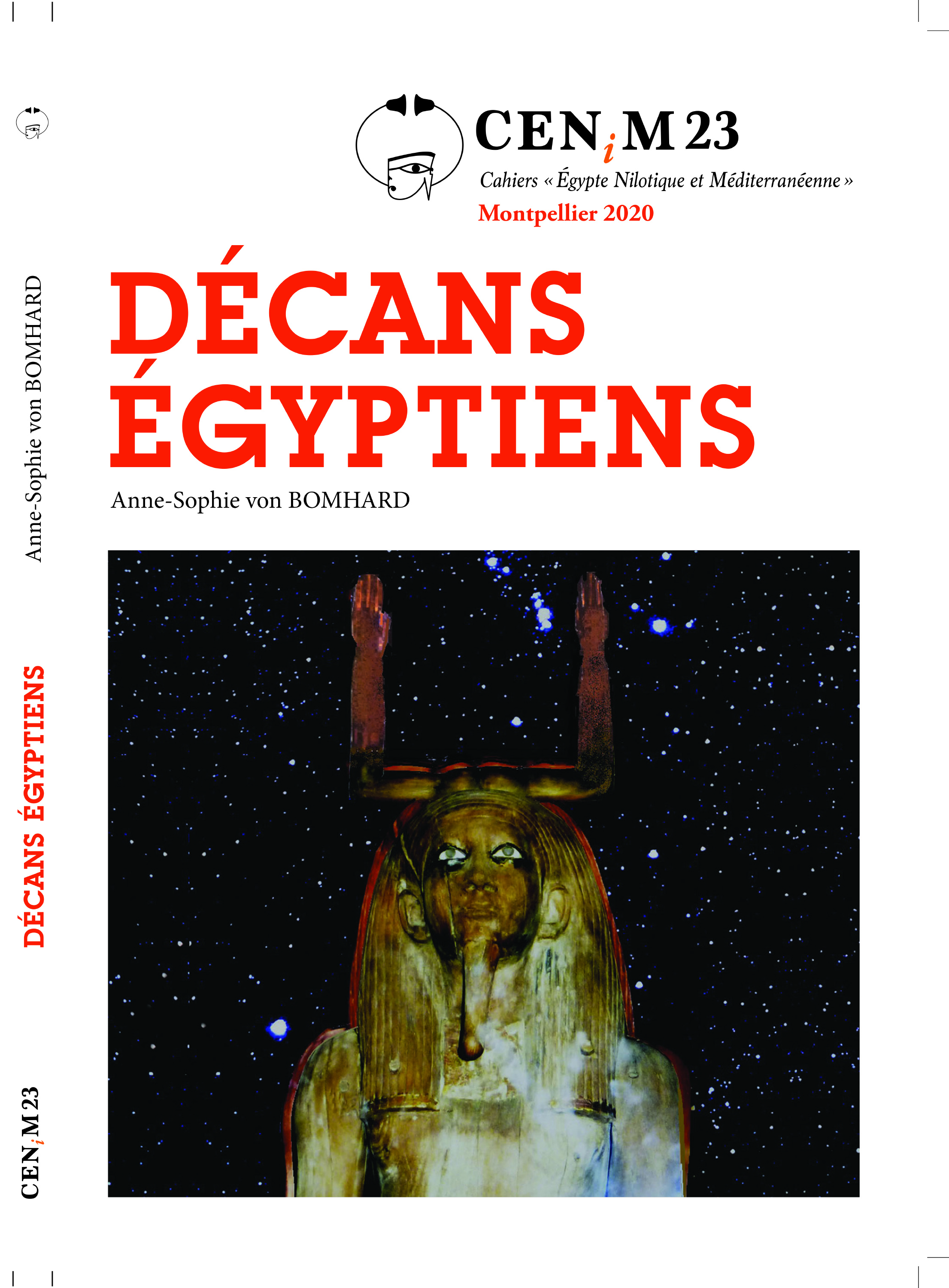 Anne-Sophie von BOMHARD DĂ©cans Ă©gyptiens, CENiM 23, Montpellier, 2020 — (2020)
Anne-Sophie von BOMHARD DĂ©cans Ă©gyptiens, CENiM 23, Montpellier, 2020 — (2020) 
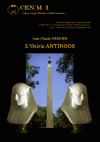 Jean-Claude Grenier L'Osiris ANTINOOS, CENiM 1, Montpellier, 2008 — (26 dĂ©cembre 2008)
Jean-Claude Grenier L'Osiris ANTINOOS, CENiM 1, Montpellier, 2008 — (26 dĂ©cembre 2008) 
TDENiM - Mise en ligne des volumes Ă©puisĂ©s : 
 Twitter
Twitter 3784927 visites - 789 visite(s) aujourd’hui - 24 connecté(s)
© ENiM - Une revue d’égyptologie sur internet
Équipe Égypte Nilotique et Méditerranéenne - UMR 5140 - « Archéologie des Sociétés Méditerranéennes » (Cnrs) - Université Paul Valéry - Montpellier III
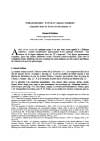
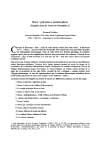
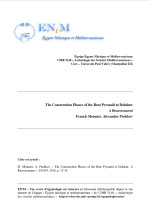
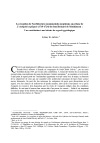
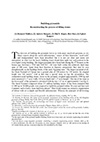
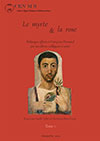
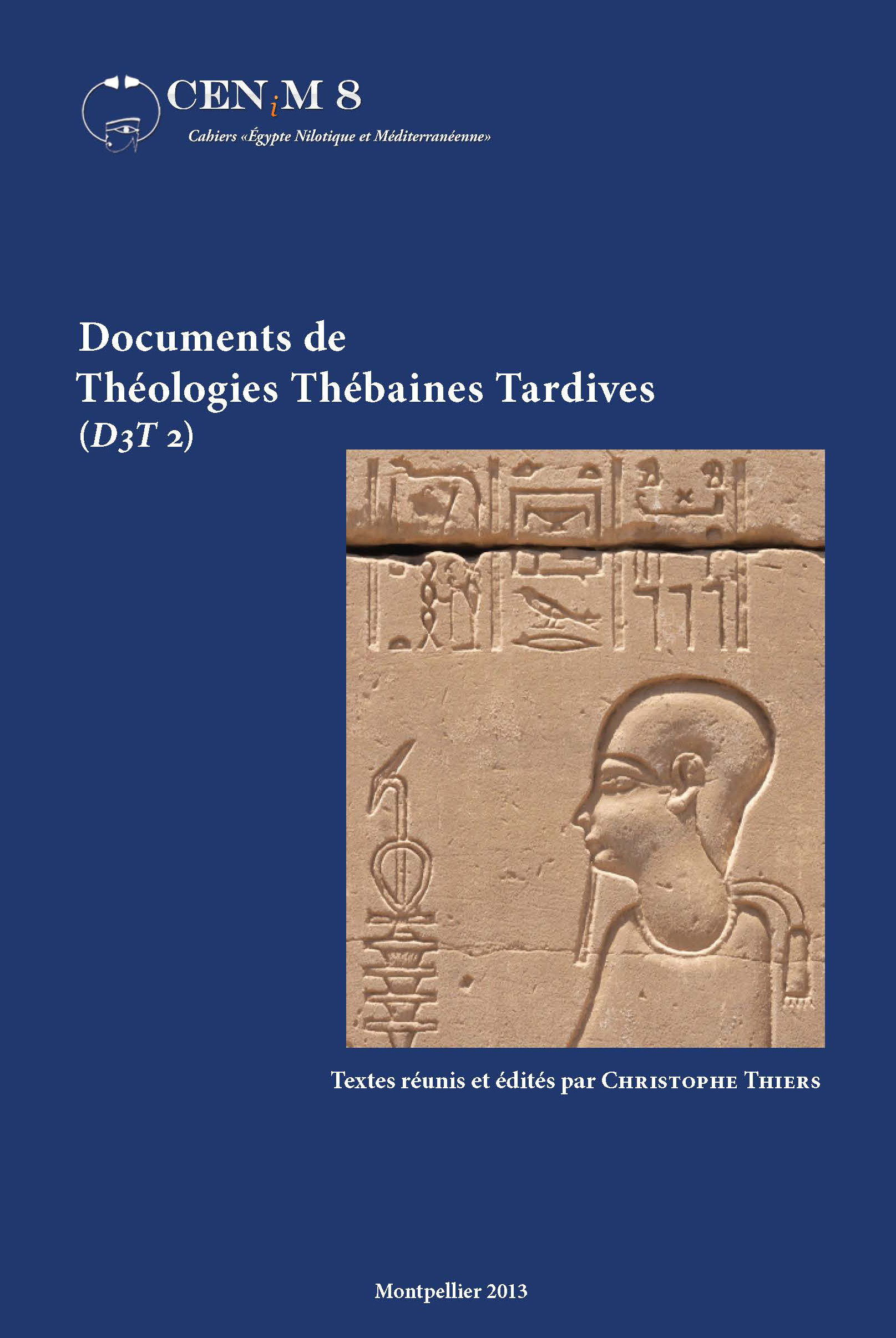

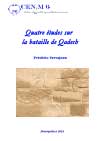
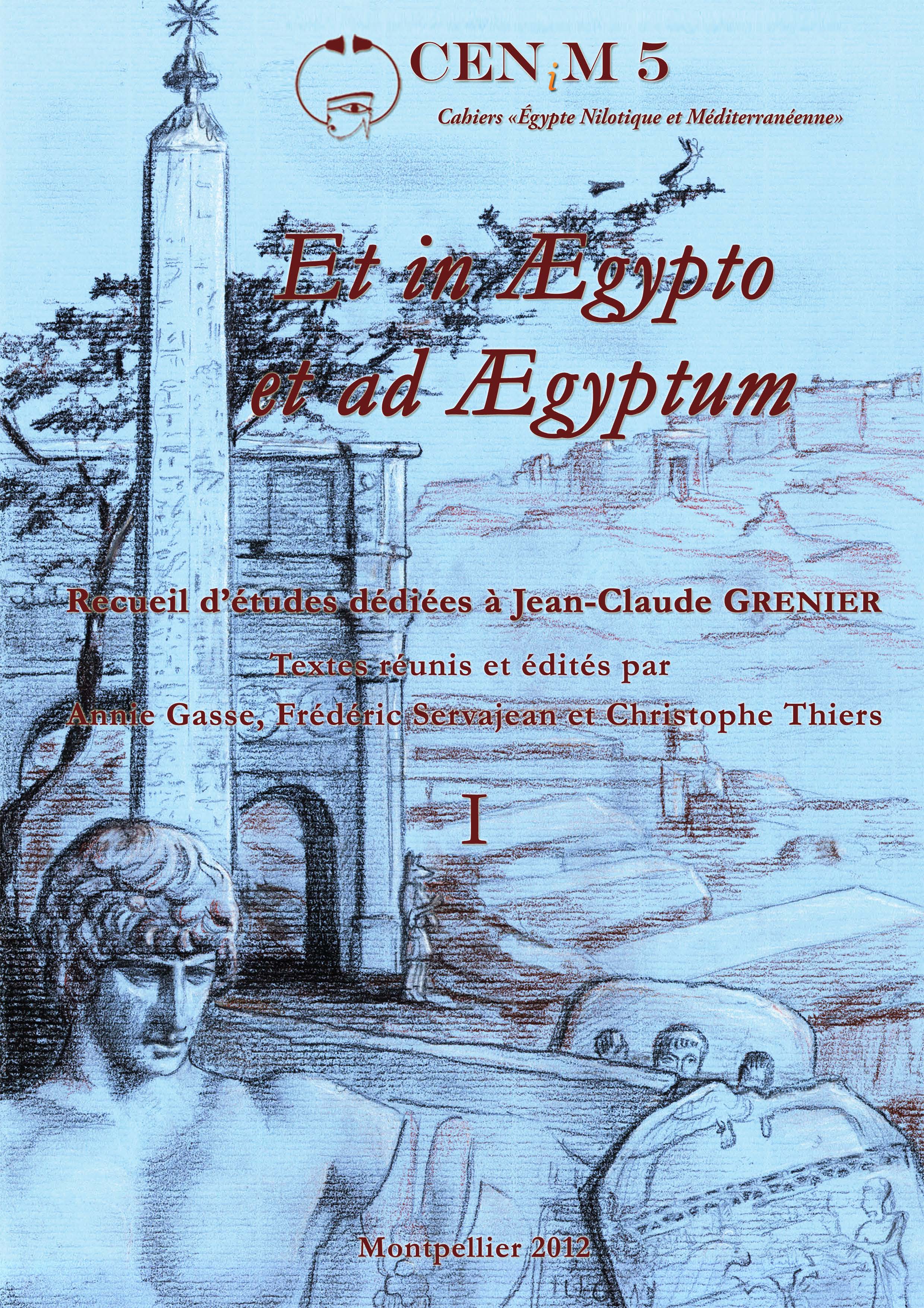
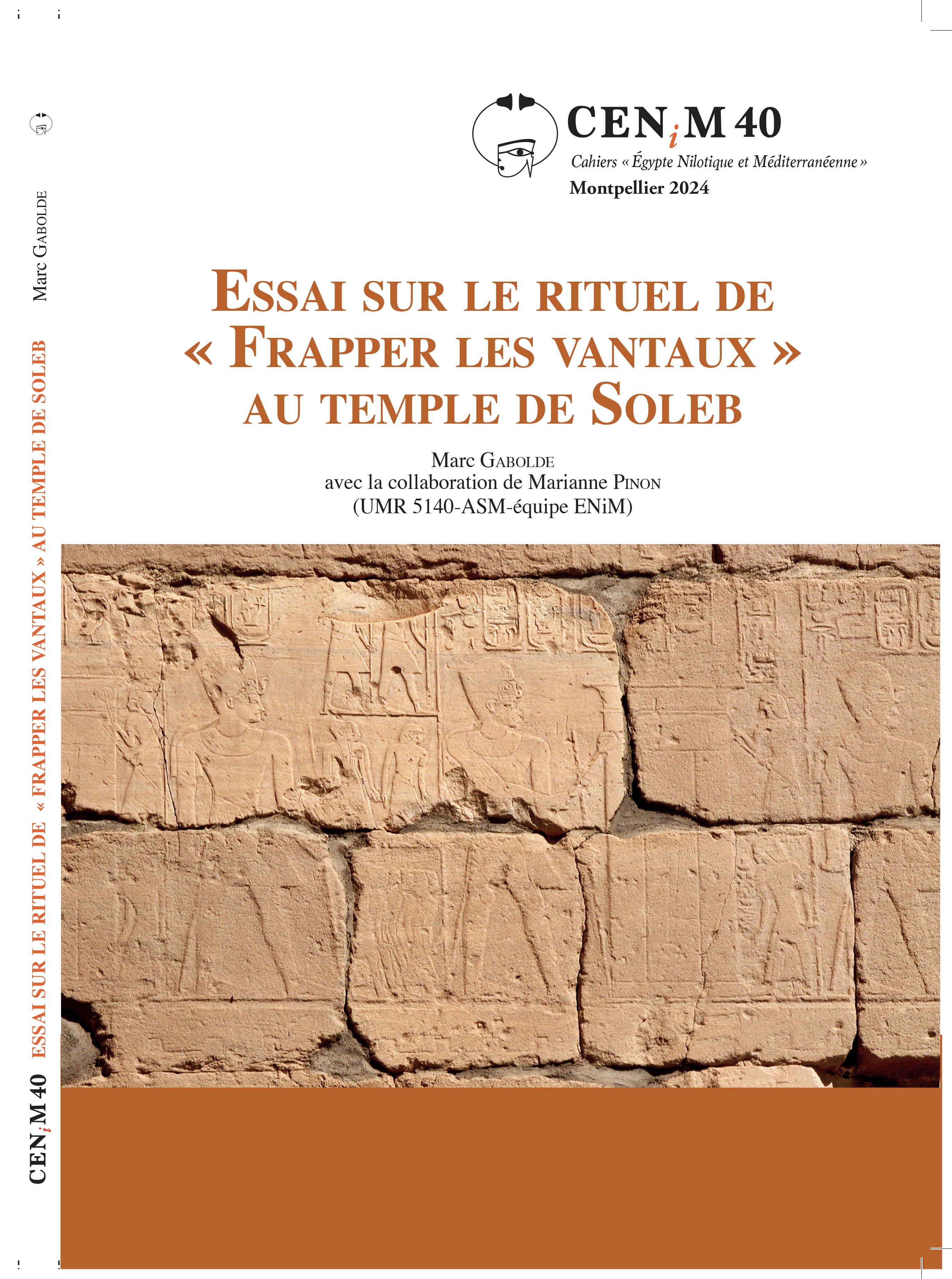
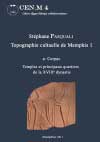
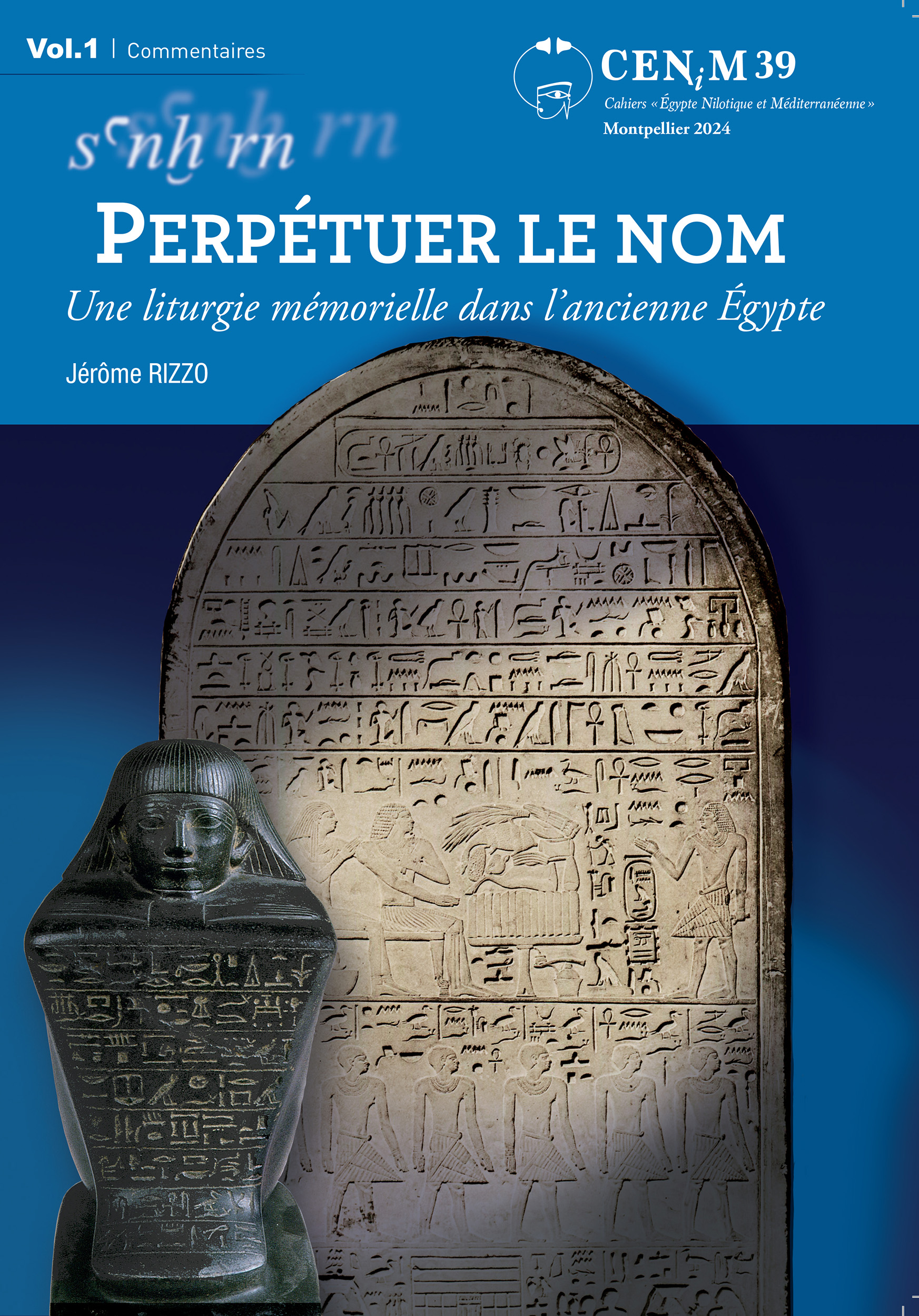
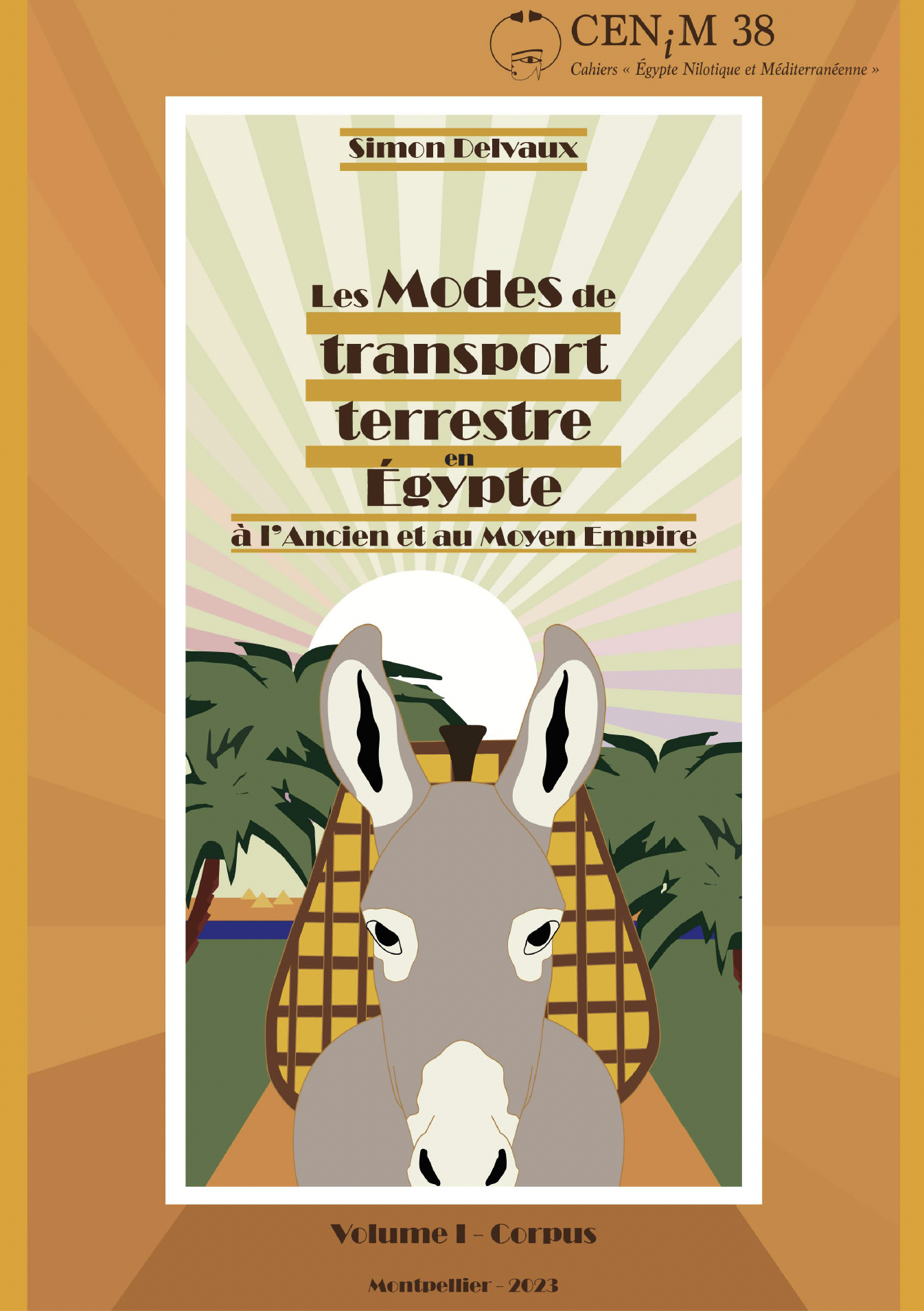
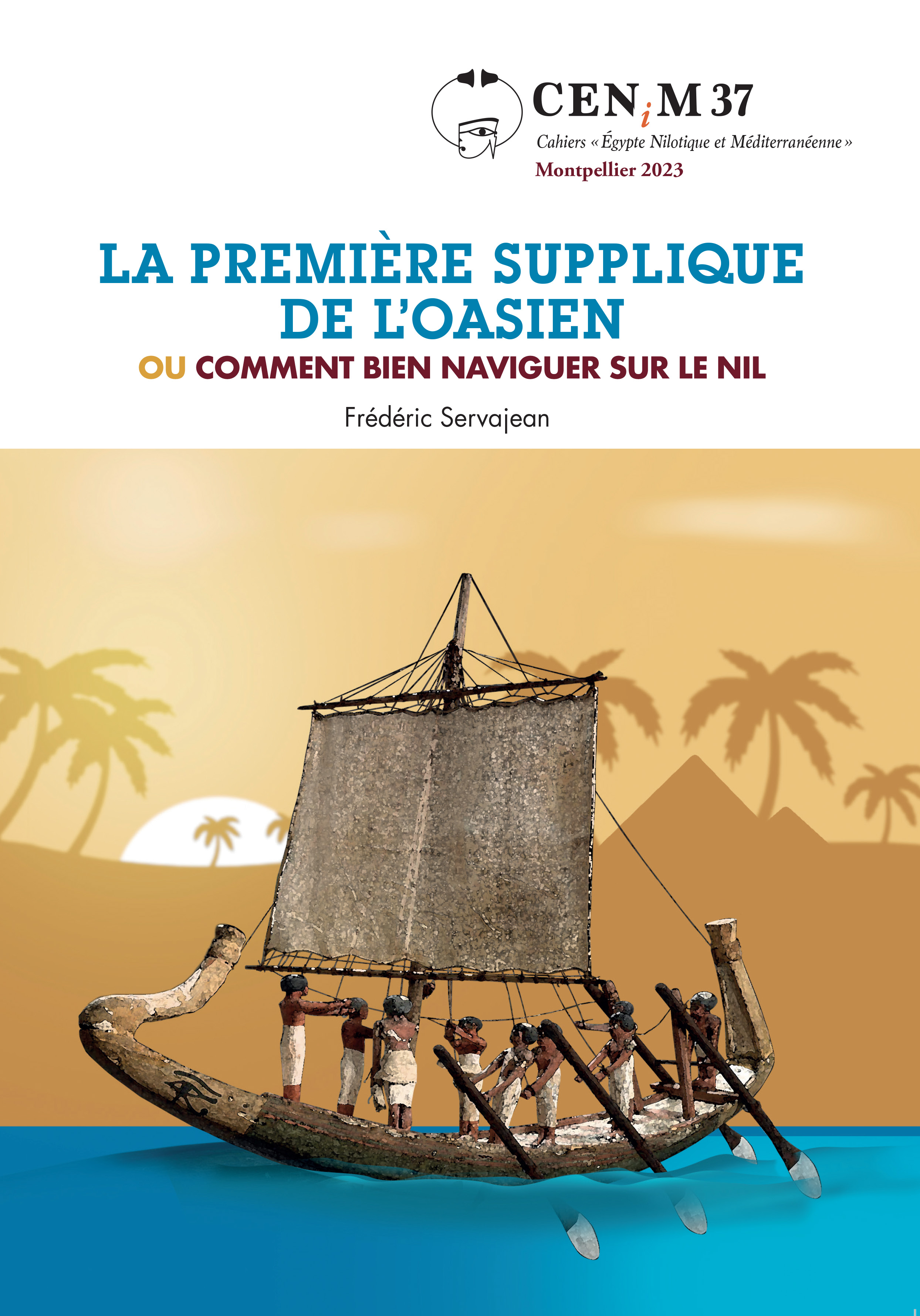
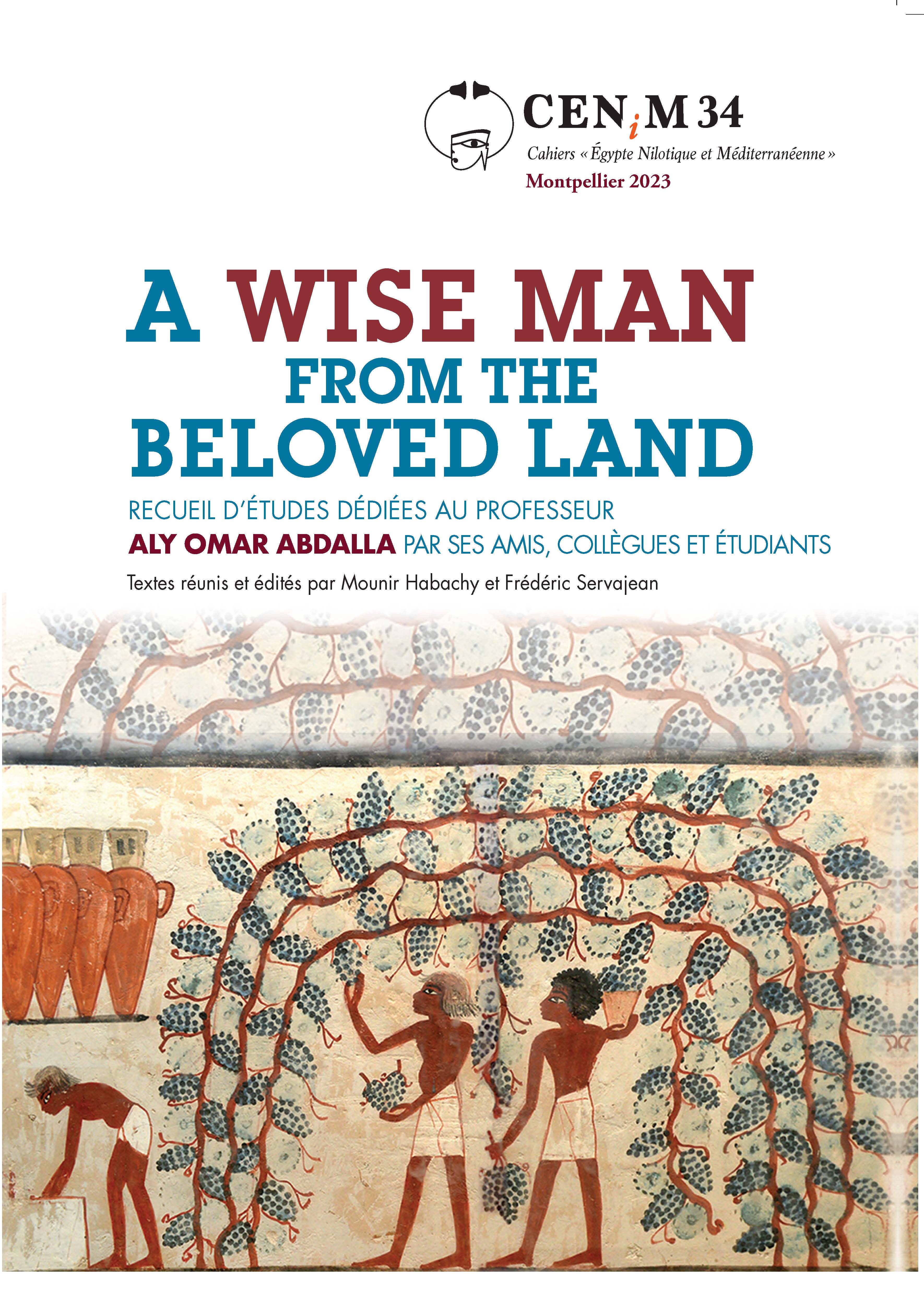
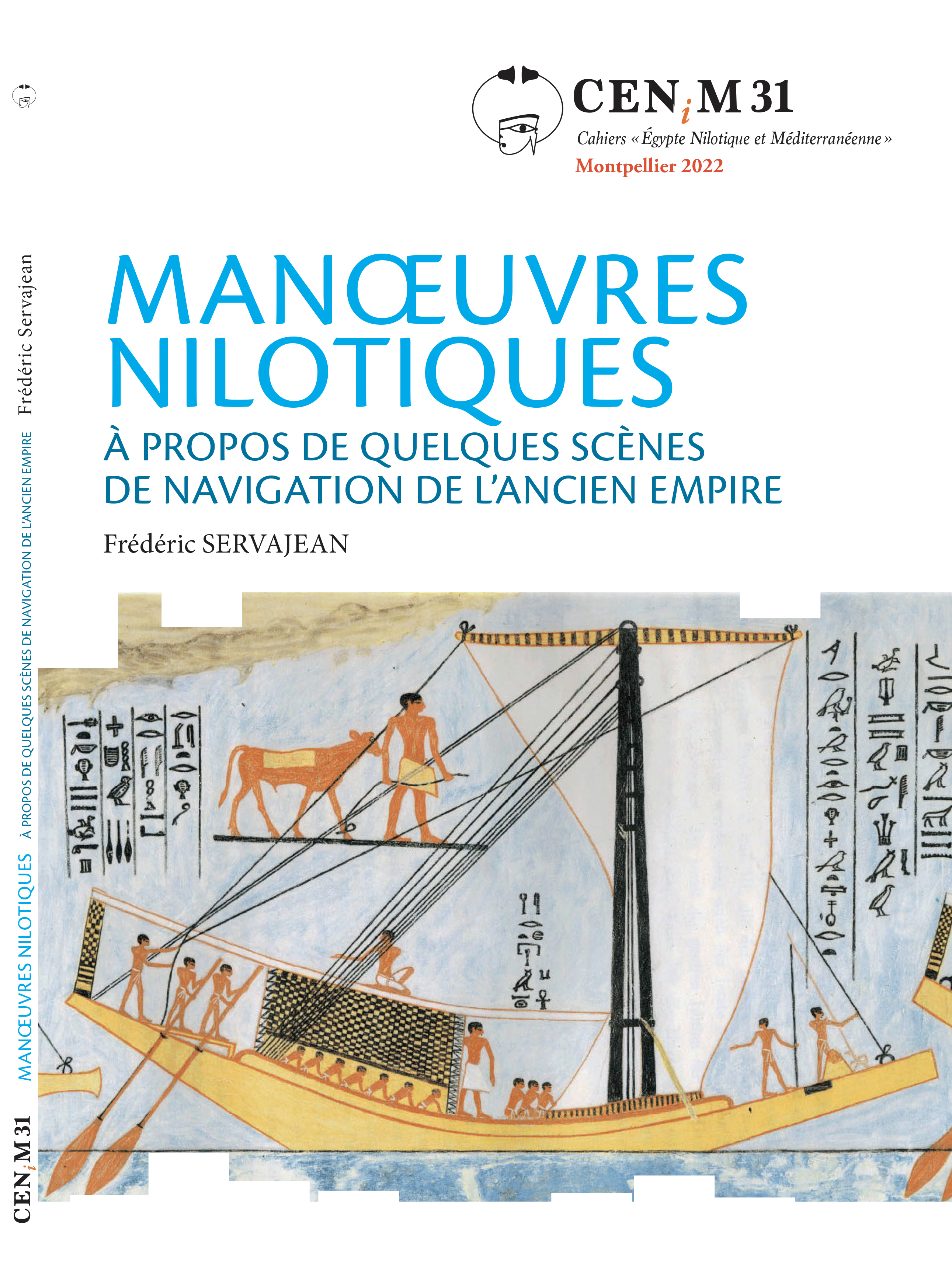
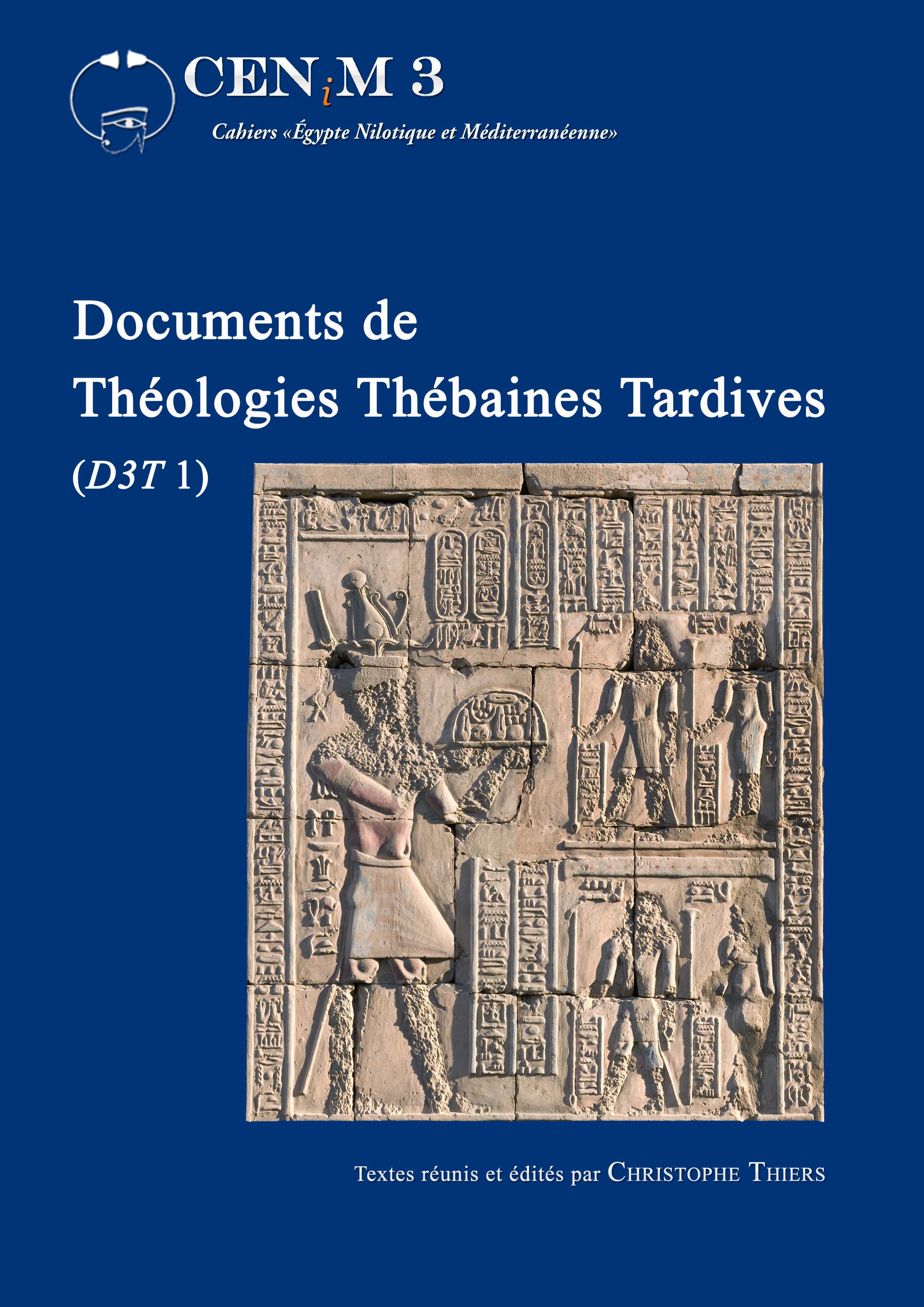
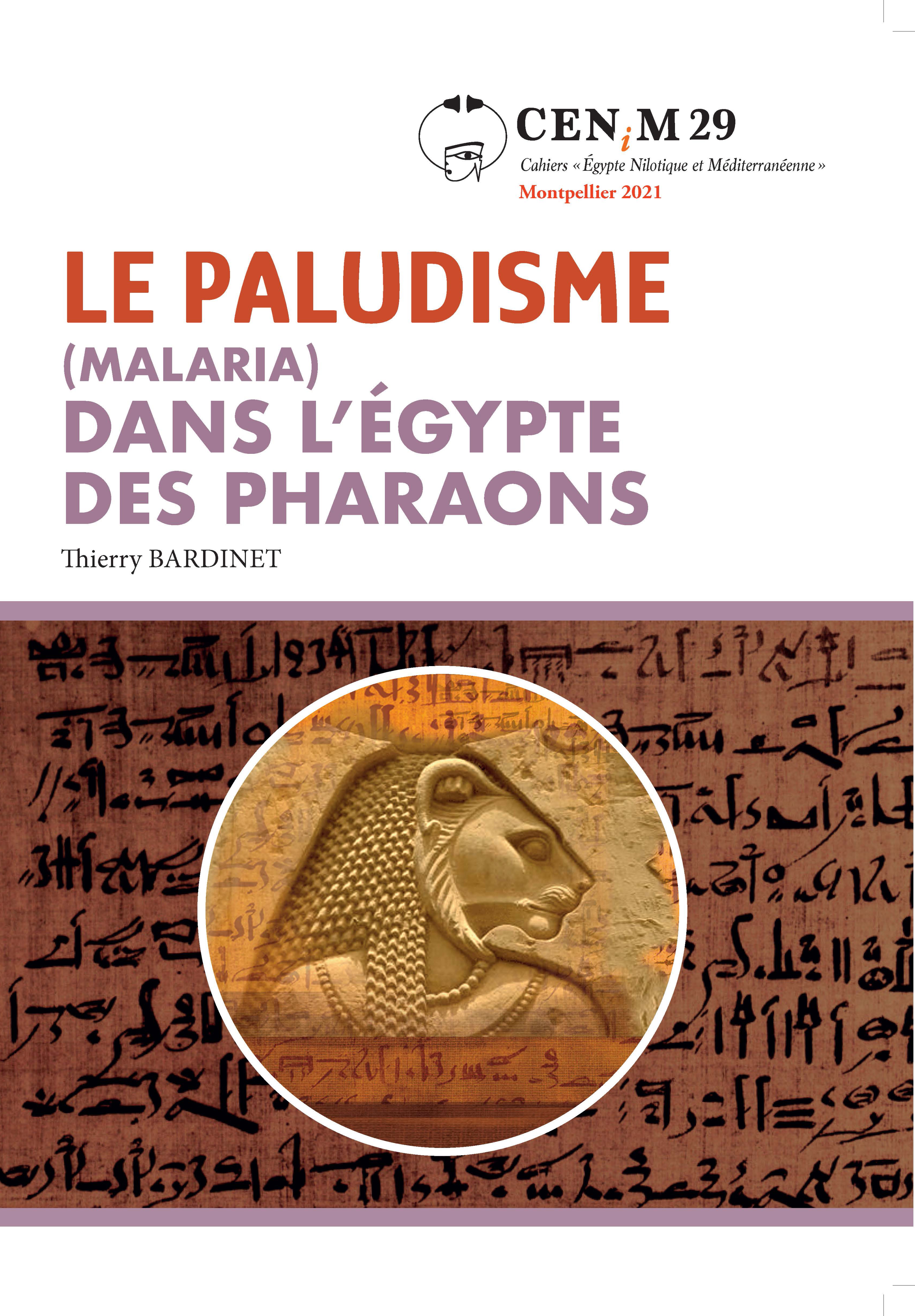
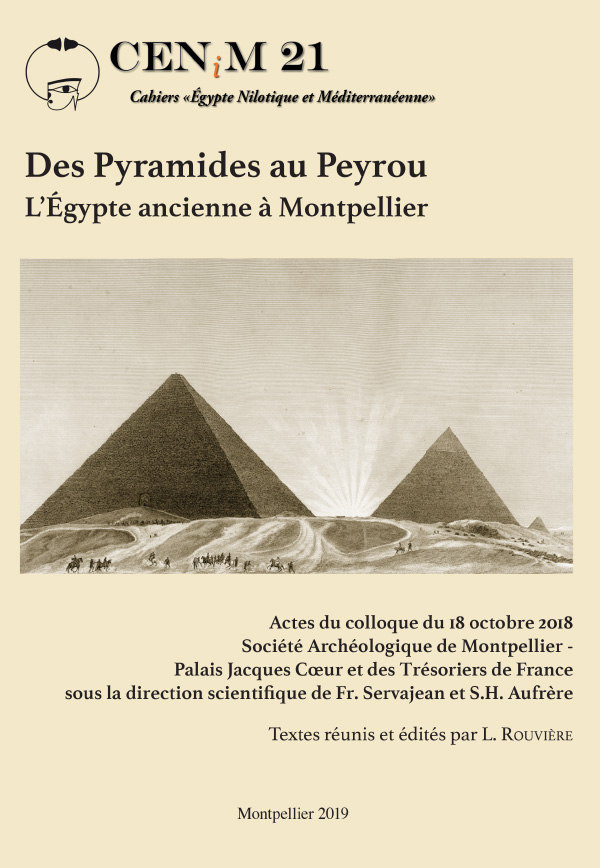
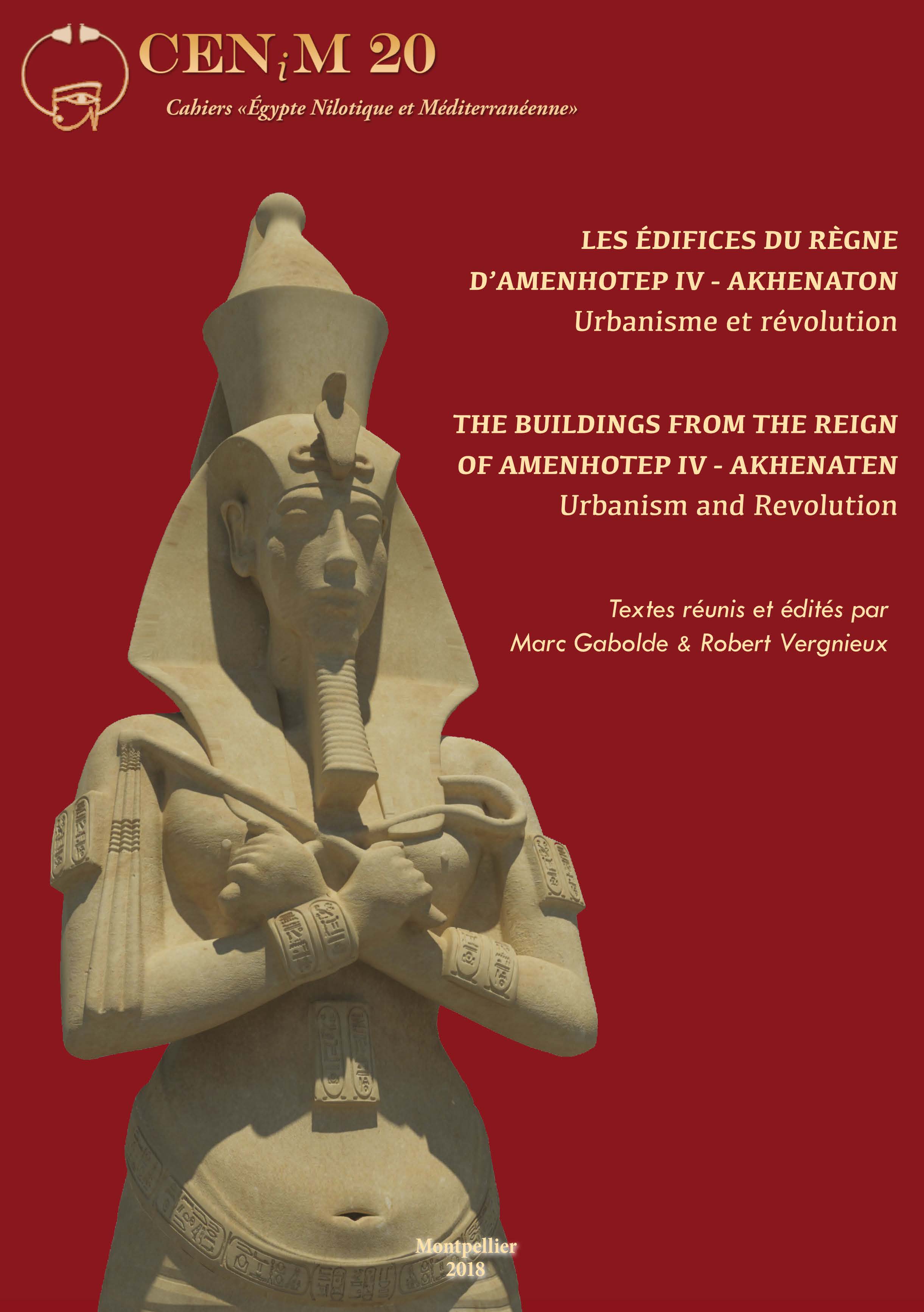
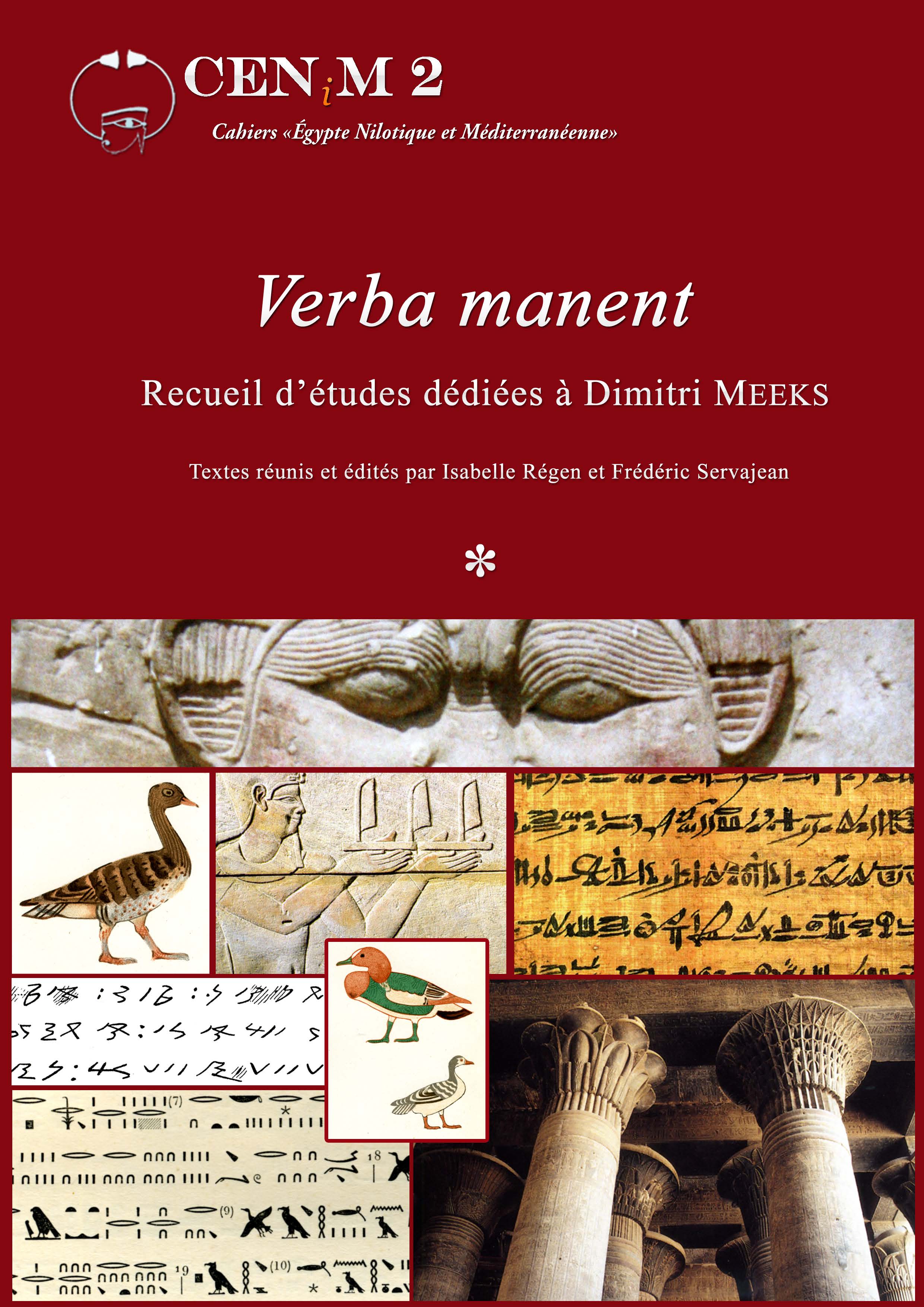
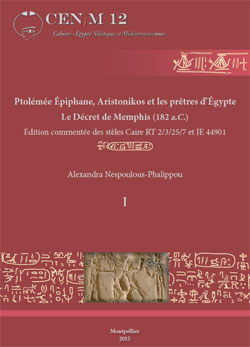
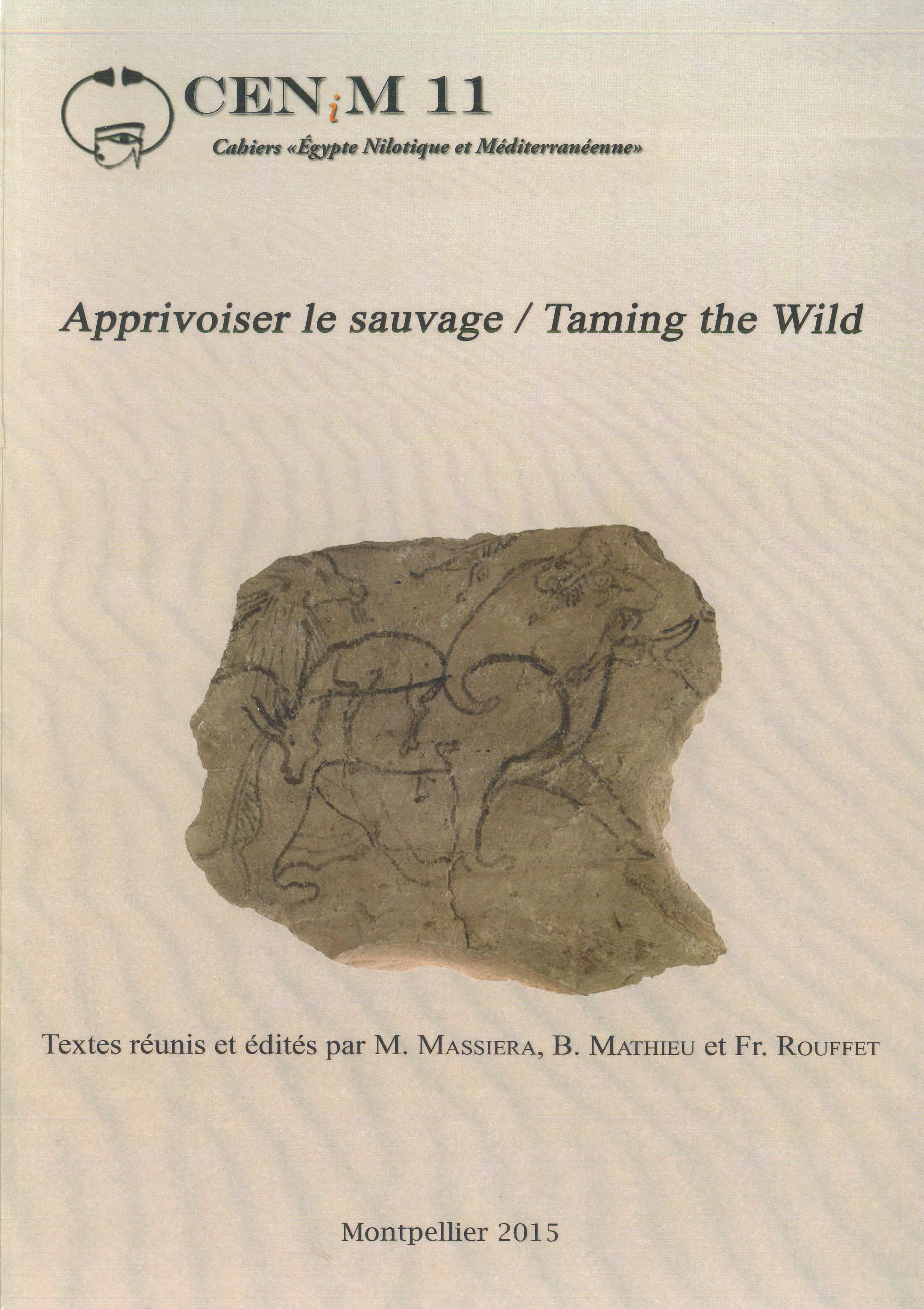
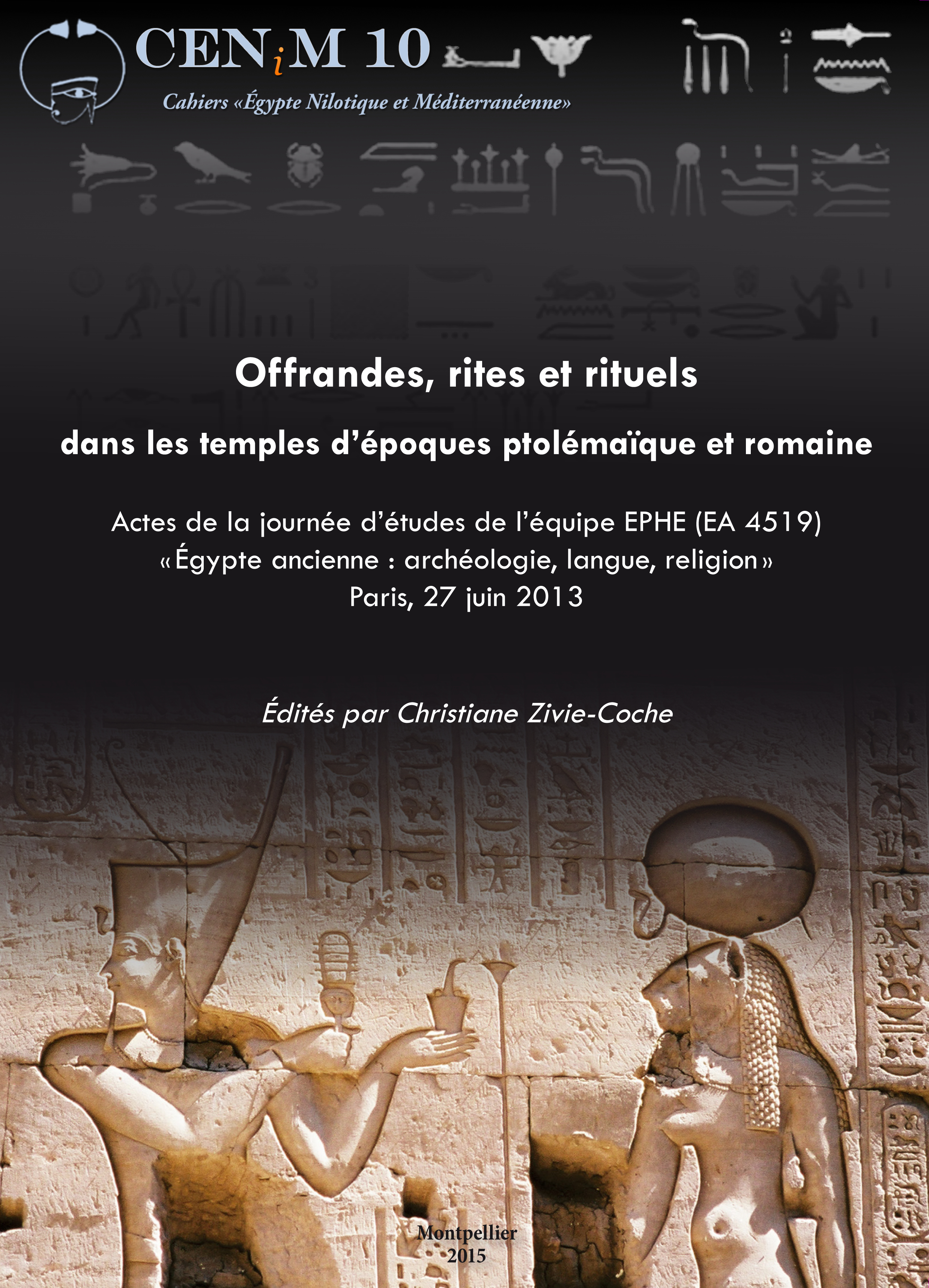
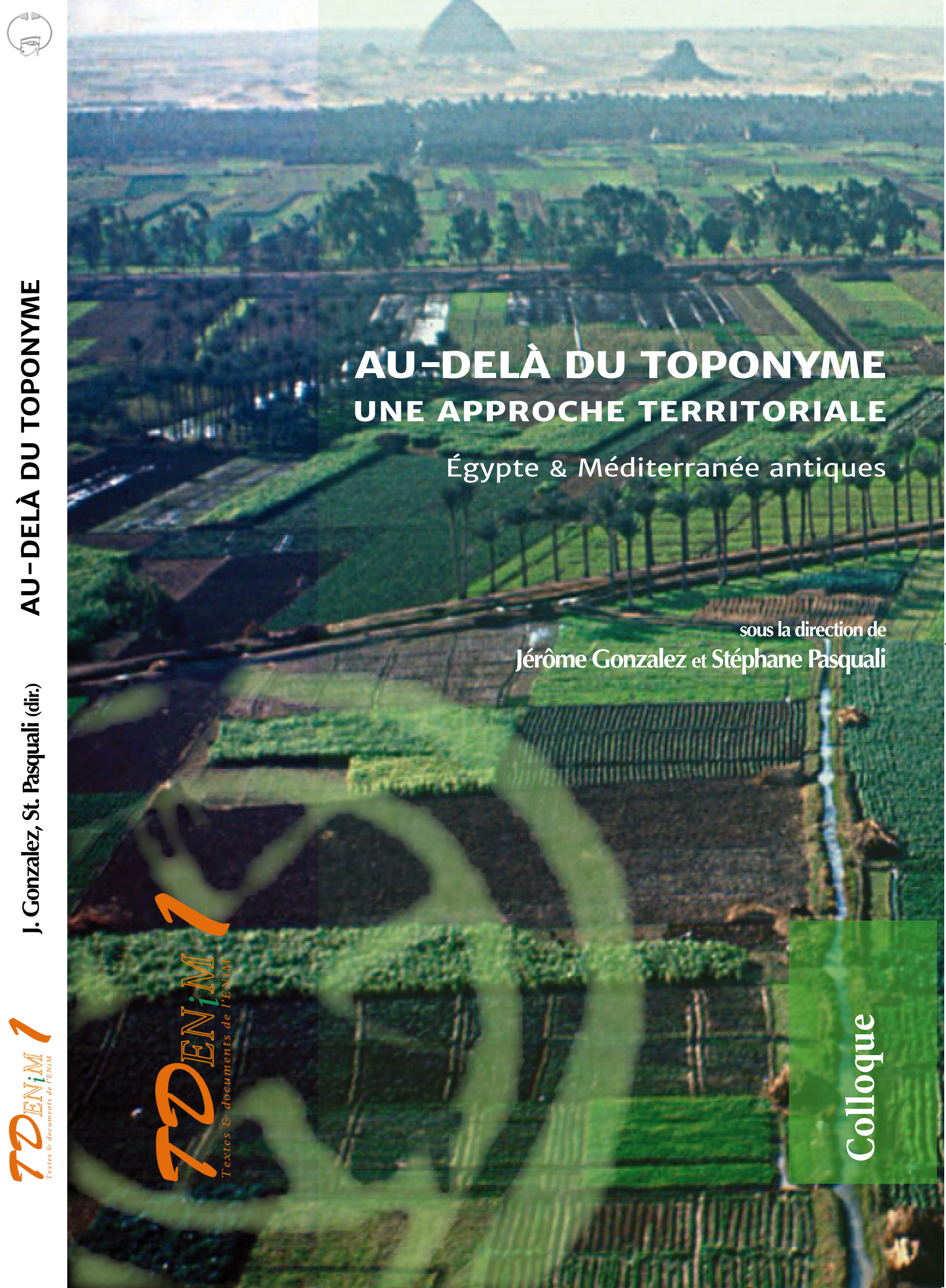
 Contact
Contact
 Abonnez-vous !
Abonnez-vous ! Équipe Égypte Nilotique et Méditerranéenne
Équipe Égypte Nilotique et Méditerranéenne UMR 5140 « Archéologie des Sociétés Méditerranéennes » (Cnrs)
UMR 5140 « Archéologie des Sociétés Méditerranéennes » (Cnrs) Université Paul Valéry - Montpellier III
Université Paul Valéry - Montpellier III